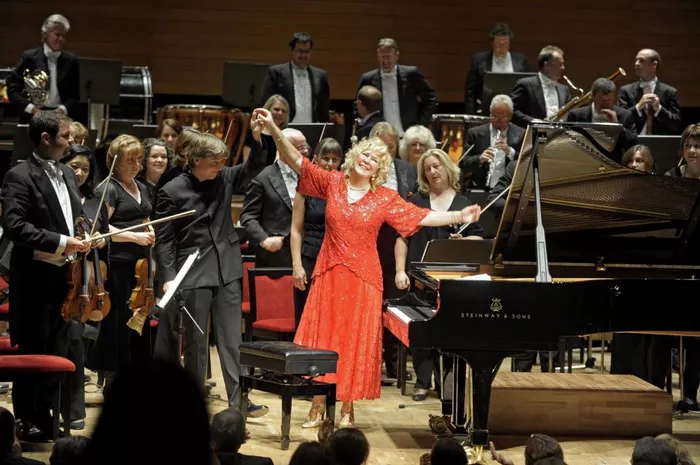In the realm of classical music, the name Mozart reigns supreme, and rightfully so. Wolfgang Amadeus Mozart, a prodigy of the Classical era, left an indelible mark on the musical landscape with his unparalleled compositions. Among his vast repertoire, one piece stands out as both enigmatic and captivating: the Fantasia in D Minor, K. 397. This masterpiece offers a glimpse into Mozart’s genius and his ability to weave intricate emotions into music with unparalleled finesse.
Historical Context
Composed in 1782, the Fantasia in D Minor is one of Mozart’s lesser-known works, overshadowed by his more famous compositions such as the operas “The Marriage of Figaro” and “Don Giovanni,” and the iconic Symphony No. 40. Despite its relative obscurity, this piece holds immense significance in Mozart’s oeuvre, showcasing his mastery of improvisatory style and his penchant for experimentation.
During the 18th century, the fantasia was a popular genre among composers, characterized by its free-form structure and improvisatory nature. Mozart’s Fantasia in D Minor epitomizes this style, as it lacks a strict formal framework, allowing the composer to explore a myriad of emotions and themes with spontaneity and freedom.
Structural Complexity
One of the most intriguing aspects of the Fantasia in D Minor is its structural complexity. Unlike Mozart’s more traditional compositions, which adhere to established forms such as sonata-allegro or rondo, this piece unfolds organically, with themes and motifs intertwining and evolving throughout.
The Fantasia begins with a haunting introduction in D minor, marked by a sense of melancholy and introspection. This opening section sets the tone for the entire piece, establishing a mood of ambiguity and uncertainty. As the music progresses, Mozart introduces a series of contrasting themes, ranging from moments of tender lyricism to passages of virtuosic brilliance.
One of the most striking features of the Fantasia is its harmonic adventurousness. Mozart takes the listener on a journey through a wide range of keys and tonalities, employing unexpected modulations and chromatic harmonies to create a sense of tension and drama. This harmonic richness adds depth and complexity to the music, keeping the listener engaged and intrigued until the final cadence.
Emotional Depth
At its core, the Fantasia in D Minor is a deeply emotional work, reflecting the tumultuous inner world of its composer. Mozart composed this piece during a period of personal and professional upheaval, grappling with financial difficulties and the demands of his burgeoning career. This emotional turmoil is palpable throughout the music, manifesting in moments of intense passion and introspection.
The Fantasia’s expressive range is vast, encompassing moments of profound sadness, fleeting moments of joy, and everything in between. Mozart’s ability to evoke such a wide array of emotions through music is a testament to his unmatched skill as a composer. Each note is imbued with meaning and significance, inviting the listener to experience the full spectrum of human emotion alongside the composer.
Technical Mastery
In addition to its emotional depth, the Fantasia in D Minor is a showcase of Mozart’s technical mastery as a composer and pianist. The piece is replete with virtuosic passages and intricate figurations, demanding both precision and dexterity from the performer. From cascading arpeggios to lightning-fast scale runs, Mozart pushes the boundaries of piano technique, demonstrating his unparalleled command of the instrument.
Despite its technical challenges, the Fantasia is more than just a display of virtuosity. Mozart infuses the music with subtlety and nuance, balancing dazzling bravura with moments of delicate intimacy. This delicate interplay between technical prowess and artistic expression is a hallmark of Mozart’s style, elevating the Fantasia beyond mere virtuoso showmanship to the realm of true artistic expression.
Legacy and Influence
While the Fantasia in D Minor may not enjoy the same level of popularity as Mozart’s more famous works, its influence on subsequent generations of composers cannot be overstated. The piece has inspired countless musicians and performers, who continue to explore its depths and uncover new insights with each interpretation.
Moreover, the Fantasia serves as a testament to the enduring power of Mozart’s music to transcend time and place. Despite being composed over two centuries ago, the piece remains as relevant and compelling as ever, speaking to the universal truths of the human experience.
Conclusion
In conclusion, Mozart’s Fantasia in D Minor stands as a testament to the composer’s unparalleled genius and his ability to create music that transcends boundaries and speaks to the depths of the human soul. With its structural complexity, emotional depth, and technical mastery, this enigmatic masterpiece continues to captivate audiences and performers alike, reaffirming Mozart’s status as one of the greatest composers in the history of Western music.

